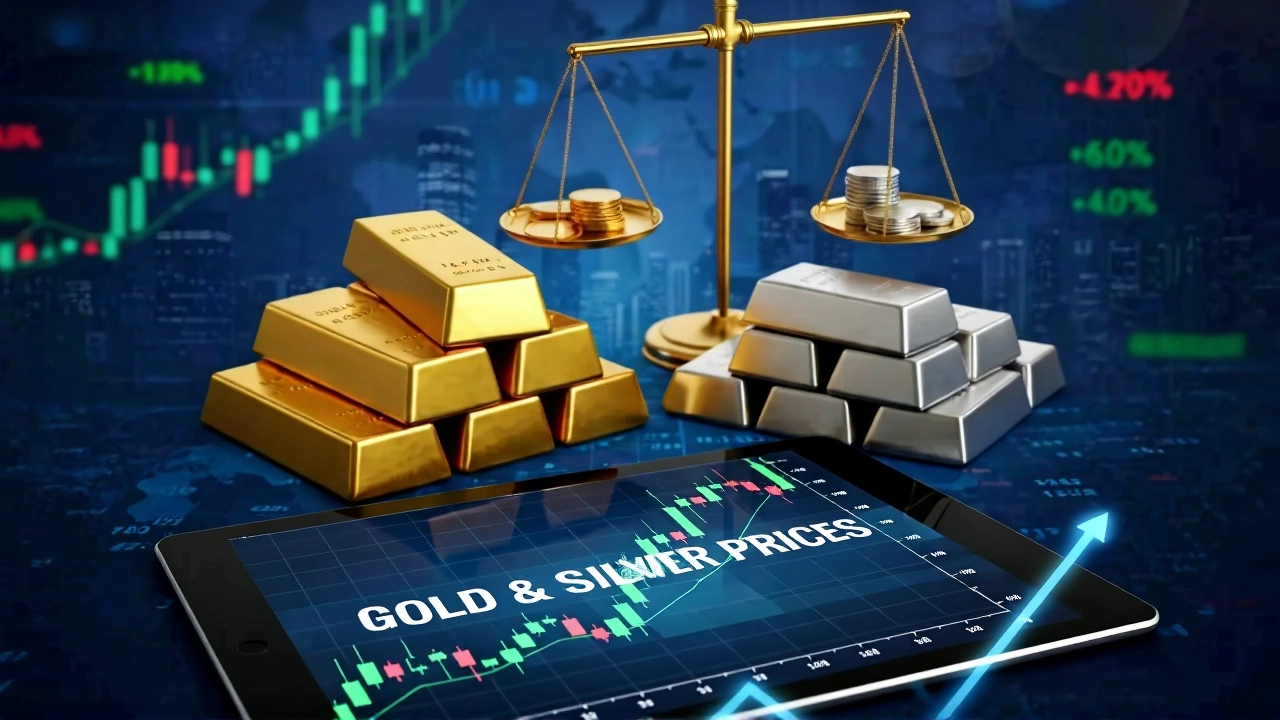Gold Prices – Real‑Time Trends, Drivers & How They Affect Your Wallet
When talking about Gold Prices, the market value of gold per ounce expressed in major currencies. Also known as gold rates, it serves as a barometer for both investors and consumers who watch its ups and downs for clues about the economy.
One of the biggest forces behind those numbers lives in the commodity markets, global platforms where raw materials like oil, copper and gold are bought and sold. When oil spikes or copper demand shifts, traders often adjust their outlook on gold too, because both are seen as safe‑haven assets in turbulent times. This link means that a sudden move in any major commodity can ripple straight into gold prices.
Another key player is inflation, the rate at which general price levels rise, eroding purchasing power. When inflation climbs, cash loses value, so investors turn to gold to preserve wealth. That demand boost tends to push gold prices higher, creating a clear cause‑and‑effect chain: higher inflation → higher gold demand → higher gold prices.
Central banks also have a front‑row seat in the action. central bank policies, decisions on interest rates and money supply made by institutions like the RBI or the Fed affect currency strength. A weaker domestic currency makes gold cheaper for foreign buyers, spurring imports and nudging prices up. Conversely, tight monetary policy can strengthen the currency and temper gold’s appeal, pulling prices down.
Beyond the macro forces, everyday jewelry demand adds its own flavor. In countries where gold is a cultural staple for weddings and festivals, seasonal buying spikes can lift prices for weeks. When Indian festivals roll around, for example, local dealers often report a surge in purchases, which briefly inflates domestic gold prices before global markets smooth things out.
Key Factors Shaping Gold Prices
To make sense of the constant flux, think of gold prices as the result of four main attributes: supply, demand, currency dynamics, and geopolitical risk. Supply hinges on mine output and recycling rates—if major mines shut down, the market feels the squeeze. Demand splits into investment appetite (ETFs, bars, coins) and physical consumption (jewelry, industrial use). Currency dynamics revolve around the US dollar; a strong dollar usually drags gold lower, while a weak dollar gives it a lift. Finally, geopolitical tension—wars, sanctions, trade disputes—creates uncertainty, prompting investors to stash cash in gold, which spikes prices.
All these pieces fit together like a puzzle. When inflation climbs, central banks may raise rates, which can strengthen the dollar, tempering the inflation‑driven demand for gold. At the same time, a supply disruption in a major mine can counteract that pressure, keeping prices elevated. Understanding how each attribute interacts helps you predict whether gold will climb or settle.
Now that you’ve got the big picture, scroll down to see the latest stories and analysis that dive deeper into each of these drivers. From real‑time market reports to practical tips on using gold as a hedge, the collection below gives you the tools to stay ahead of the curve.
Economy & Markets

Gold Hits ₹1.22 Lakh/10g as Silver Soars Ahead of Diwali 2025
Gold tops ₹1.22 lakh per 10 g and silver hits record highs ahead of Diwali 2025, driven by festive demand and global market forces.